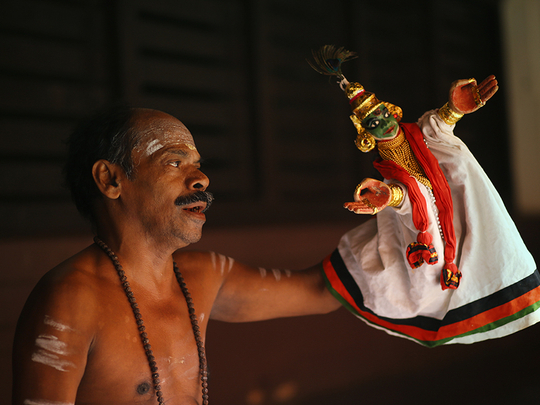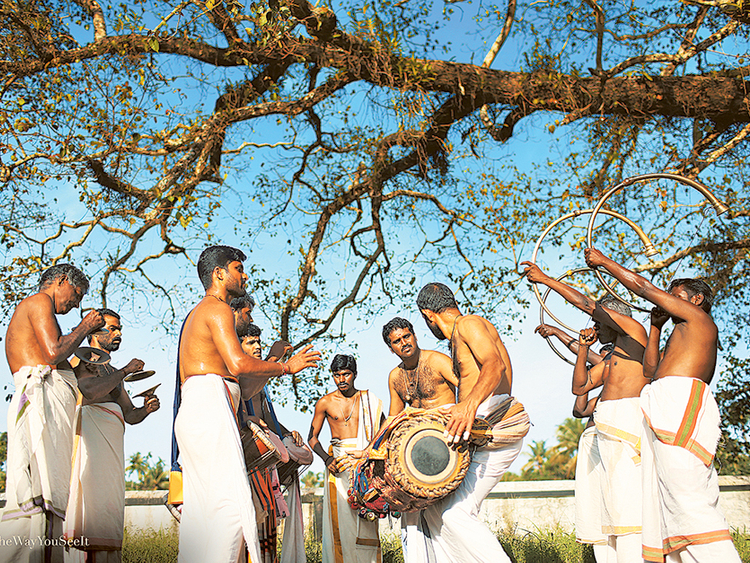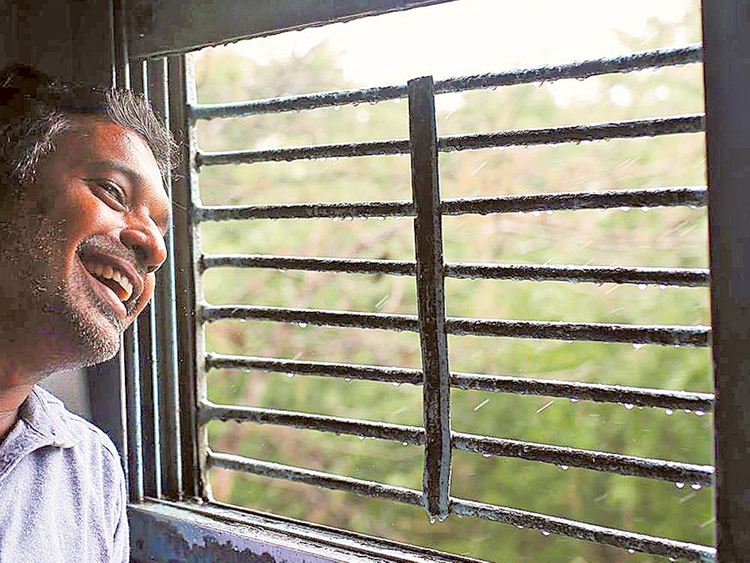
In Gopinath Parayil’s vocabulary, A is for Authentic, E is for Experiential, M is for Meaningful and S is for Stories. By assigning a relevant value to each letter of the English alphabet through his A-Z of Responsible Tourism campaign, he has been consistently demystifying the concept of responsible travel to enable those in the industry and travellers understand the immense long-term social and economic benefits that sustainability brings to destinations and the people of those regions.
As founder of The Blue Yonder, a pioneering responsible tourism company set up in 2004 in Puducherry (formerly Pondicherry), India, Parayil abhors the idea of travel experiences that bear little relation to the reality of the places we visit. Ticking off the much-touted landmarks found in travel guides, witnessing shows or performances staged solely for the benefit of tourists, relaxing in the luxurious environs of soul-less hotels or relishing food that has clocked several thousand air miles from farm to plate occupy no place in his travel itinerary.
Instead, it is in the often little known villages and towns that are far off the conventional tourist radar that The Blue Yonder sets out to explore the distinctiveness of a destination. What makes the region unique? What are its geographic characteristics, its history, culture, oral traditions and folklore? How do communities there live? What do they grow and eat? And most importantly, when the tourists have gone, what is the impact their visits leave behind?
These are questions that continue to dominate every aspect of his interaction with a destination and its people for Parayil is adamant that any travel experience ought to be sensitive to the local surroundings, including the people and the environment in which they live. “When we travel, the people there are sharing with us the place they call home and we are duty-bound to respect that environment and culture,” he says.
To enhance the well-being of host communities, he involves the local community in decisions that directly impact their lives so as to build up local pride and confidence. “Imbuing them with a sense of belonging and ownership and recognising the centrality of the local population in the touristic development of their own territory is a key step in the journey towards responsible tourism,” he says. “And for tourists, a better understanding of local cultural, social and environmental issues gained by forging meaningful connections with the local community can lead to an immersive cultural experience, quite unlike any other.”
Being a responsible traveller is a more conscious way of travelling, he says. “Each of us must be aware of the impact we make as we travel. This is why we need to put the needs of the host destination first. By showing our respect for the people, their livelihoods, landscapes, living culture and heritage, we are instilling in them the pride that these resources are not only invaluable but also worth protecting and that it can also provide them a livelihood.”
Long before the concept of responsible tourism as we know it today had entered the consciousness of mainstream society in India, Parayil had positioned The Blue Yonder to work towards what he believed “was our ‘responsibility’ to ‘respond’ to our surroundings”.
Strangely enough, the inspiration behind setting up this company founded on the mantra of “Creating Better Places for People to Live and for People to Visit” had nothing to do either with tourism or a well-planned business strategy. “It was born out of a passion — an innate desire to revive a deteriorating river that was such an intrinsic part of my childhood and growing up years,” he says.
The Bharatapuzha (or River Nila as it is commonly known) was a central element of his day-to-day life, remembers Parayil. “For us, it wasn’t just a body of water; it was the lifeline of communities that lived on its banks, and it had a profound influence on our cultural life and religious traditions.”
Yet, for the man who calls this river his home, it was the death of his father — shortly after his return from the UK in 2003 — that was to eventually deepen and strengthen his bond with the Nila permanently. The tipping point, he says, came about while performing the traditional funeral rites for his father on the banks of the river.
“It wasn’t summer yet but as I struggled to dip myself in the puddle of water I painfully became aware that the Nila was a river in crisis. And what I saw stretched before me — parched river beds and shallow, sluggish pools of water — literally choked me. The impact of years of unchecked sand mining, construction of dams and deforestation had clearly taken its toll and the Nila was no longer as alive and exuberant as she had once been.” Aiding this degradation was the Gulf boom in Kerala in the 1980s that led to a surge in construction frenzy, exerting pressure on the Nila for sand. As modern, palatial homes began to rise along the river banks, traditional homes built with natural building materials such as timber, laterite stones and terracotta were demolished in quick succession.
At 250 kilometres, the Nila is the longest river passing through Kerala and originates from the Anaimalai Hills in the Western Ghats in Tamil Nadu. It traverses through three administrative districts of the state before flowing into the Arabian Sea at Ponnani, in Malappuram district.
A fertile land for a variety of folk, ritualistic and classical art forms and a cradle of the cultural spirit of the region, the Nila has been a perennial source of inspiration for poets and writers, nurturing a great literary tradition.
Concerned about the decaying state of the river, the dilution of its culture and depletion of its resources, Parayil was certain that if no action was taken, the Nila would soon be lost to the next generation. “It is a way of life that gets eroded when a river dries out,” he says. It was precisely to revive, regenerate and breathe life into this river that he quit his job as a fundraiser for a charity organisation in UK and founded the not-for-profit Nila Foundation in 2004.
“Sustaining a river is about nourishing a culture,” says Parayil, who shifted the emphasis from neglect of the river to positive stories about the people whose lives it continues to influence. “The Nila weaves its way through the lives of the local people; and so the foundation, apart from conducting research on river conservation, began to work with riverbank communities engaged in traditional occupations such as pottery, handlooms, puppetry and folk art.”
It was when personal funds ran out and he needed a sustainable funding support for the Nila Foundation activities that he considered the idea of using tourism as a tool for generating income. Thus was born The Blue Yonder which incidentally set the pace for the development of responsible tourism in the country.
To further the cause of the Nila, Parayil has encouraged the community of craftsmen, artisans, musicians and even those involved in sand dredging to be part of The Blue Yonder to help provide them with an alternative and supplementary source of income. By incorporating neglected folk art forms, craft traditions and musical skills into its travel itineraries, he has enabled its practitioners to preserve and conserve their rich, cultural legacy.
The Blue Yonder has since gone on to win multiple international awards and recognitions for its responsible tourism initiatives that are designed to address local issues related to triple bottom-line responsibility. In 2009, Parayil was featured among the 50 Social Entrepreneurs in India. He co-founded World Responsible Tourism Networking to bring together peers in tourism business together, is a Board Member of the new Asian Ecotourism Network (AEN) and also on various juries, including National Geographic World Legacy Awards.
He attributes his unconventional development approach to his extensive volunteering experience in the neighbourhood network model of palliative care services in Kerala, which introduced him to the effectiveness of collaboration and crowdsourcing to achieve the desired goals. Also a disaster management consultant, Parayil believes that the potential of the travel tourism industry has been ignored and underutilised especially when it comes to disaster preparedness, management and response.
Citing the 2015 Chennai floods as a case in point, he asserts that with access to every vertical of a supply chain management, the tourism industry could have played an important role in relief efforts during the disaster response. “More importantly, it could also have done more to ensure that such a disaster didn’t happen as many hotels and restaurants were built on flood plains violating every single urban planning regulation.”
“Any natural or manmade disaster sounds the death knell for the tourism industry operating in that region, and consequently, it also affects the lives and livelihoods of the communities dependent on it. Therefore, for the long-term sustainability of destinations, it is important that the tourism industry must work together to offer an integral community-based approach to disaster resilience.”
“People are at the heart of responsible tourism,” he adds, “and I urge travellers looking for authentic experiential travel to choose companies that offer greater cross-cultural understanding, support and promote sustainable development and are respectful of local communities.”
Sangeetha Swaroop is a writer based in Dubai.














